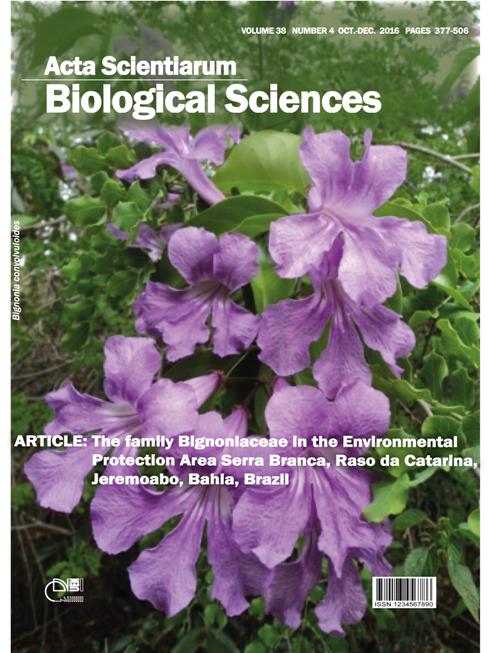<b>Cannibalism among <i>Myrmeleon brasiliensis</i> larvae (Návas, 1914) (Neuroptera, Myrmeleontidae)
Resumo
Cannibalism is influenced by various intrinsic and extrinsic factors of the population, such as density, population structure, prey availability, habitat structure and famine. These factors acting either independently or in synergy determine the frequency of cannibalism. The aims of the present study were to evaluate the effect of density and food availability on the occurrence of cannibalism among Myrmeleon brasiliensis larvae (Neuroptera, Myrmeleontidae). In the present study, the occurrence of cannibalism among M. brasiliensis larvae was greater in the treatments that simulated an absence of food in situations of both high and low density. The search for food makes a larva move about to forage, thereby increasing the risk of falling into the trap of a neighboring larva. Thus, the cannibalistic behavior of M. brasiliensis larvae may be associated with opportunity rather than a direct attempt to pray on the same species.
Downloads
DECLARAÇÃO DE ORIGINALIDADE E DIREITOS AUTORAIS
Declaro que o presente artigo é original, não tendo sido submetido à publicação em qualquer outro periódico nacional ou internacional, quer seja em parte ou em sua totalidade.
Os direitos autorais pertencem exclusivamente aos autores. Os direitos de licenciamento utilizados pelo periódico é a licença Creative Commons Attribution 4.0 (CC BY 4.0): são permitidos o compartilhamento (cópia e distribuição do material em qualqer meio ou formato) e adaptação (remix, transformação e criação de material a partir do conteúdo assim licenciado para quaisquer fins, inclusive comerciais.
Recomenda-se a leitura desse link para maiores informações sobre o tema: fornecimento de créditos e referências de forma correta, entre outros detalhes cruciais para uso adequado do material licenciado.












1.png)




3.png)













